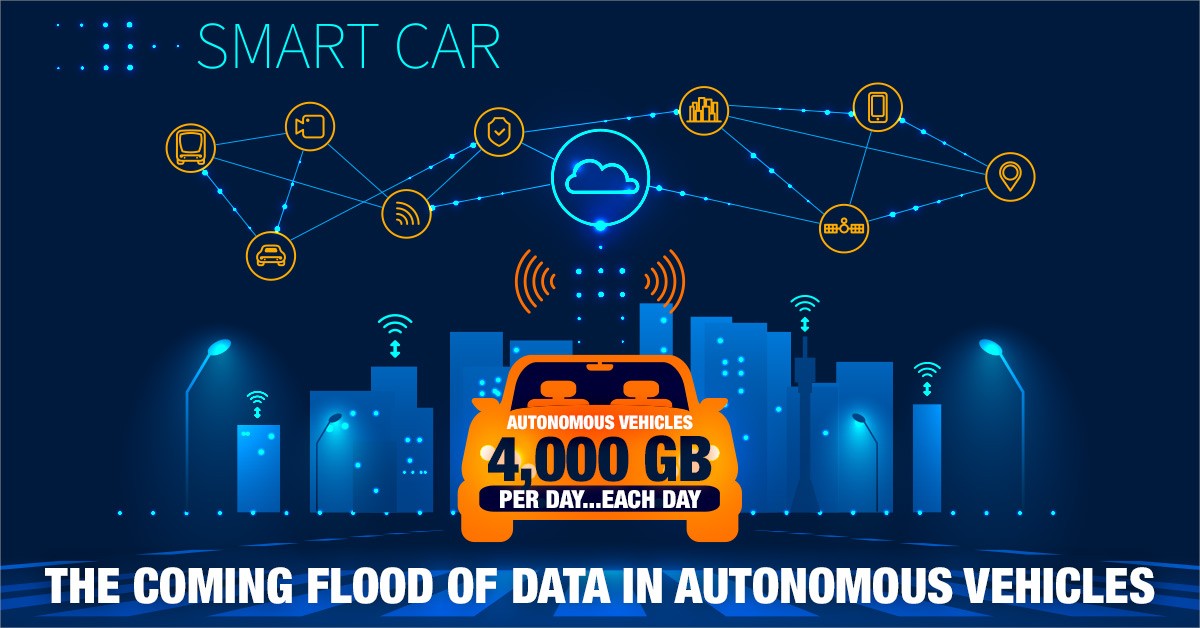Since the 1930s, we have dreamed of the self-driving car, a way to enjoy the open road in the privacy of our own vehicles without the tedium of driving them ourselves. Over the years, automotive technology has advanced in many areas, pushing us closer to that elusive tipping point. Now, in 2017, we can finally see over the gates into that new country ahead. 5G is the final key to accelerate the new era of truly autonomous driving.
5G will Revolutionize Communication Networks - And Autonomous Cars
Think, for a moment, about how many different systems will be running in a truly autonomous car: cameras, radar, lidar, GPS, sonar, and even entertainment systems. All of these will need to be connected to a network and will transmit data--all at once. Conservative estimates show each autonomous car transmitting and receiving approximately 4000 GB of data each and every day. Can you imagine your current LTE network handling that kind of data load as quickly as these solutions require? An extraordinary problem requires an extraordinary solution, and 5G is the answer.
5G is the next generation of wireless cellular networks, and it will allow data to move at unprecedented speeds and with extremely low-latency, meaning far fewer dropped data packets and far more data moved per second across networks. The final piece of the puzzle for autonomous cars becoming a reality is not another piece of tech in the car, but the communications network that will handle the huge amounts of data that tech transmits and receives. 5G will enable smart cars to truly become smart, as they will have seamless access to transmit and process sensors, safety, and other information everywhere they go.
5G Networks Will Enable Autonomous Cars to Learn in Groups
Not only will the autonomous smart cars of the near future be able to have constant access to data, accessing everything from weather information to road conditions, but they can upload and download shared information from other cars. Cars will share information with other cars, traffic lights, and other road-warning systems using V2V (Vehicle to Vehicle) and V2I (Vehicle to Infrastructure) communication over 5G. To reduce network traffic, autonomous cars will also save extremely large data uploads or downloads when possible for wifi-enabled areas, such as service stations and intersections. Finally, 5G will offer end-to-end robust security for these cars as they communicate with one another as well as to data centers.
Autonomous Cars Will Partner with Data Centers for On-the-Road Learning
With autonomous cars expected to hit the road in significant numbers in the next decade, and with the expected advent of 5G, Intel is preparing the data center with high-speed building blocks that will meet the demands of new workloads including artificial intelligence. These centers will allow cars to access the information they or other cars have stored, allowing them to recognize common objects they’ve “seen” before and learn to identify new and unexpected obstacles. The next generation of Intel chipsets available to data center servers means increased data transfer speeds, lower latency, and greater security.
Looking for a systems integration partner that can help put the pieces together? UNICOM Engineering is ready to partner with solution developers to engineer and build solutions that make this future possible.
Find out more by visiting our website at www.unicomengineering.com or call one of our solutions architects at 800-977-1010.
